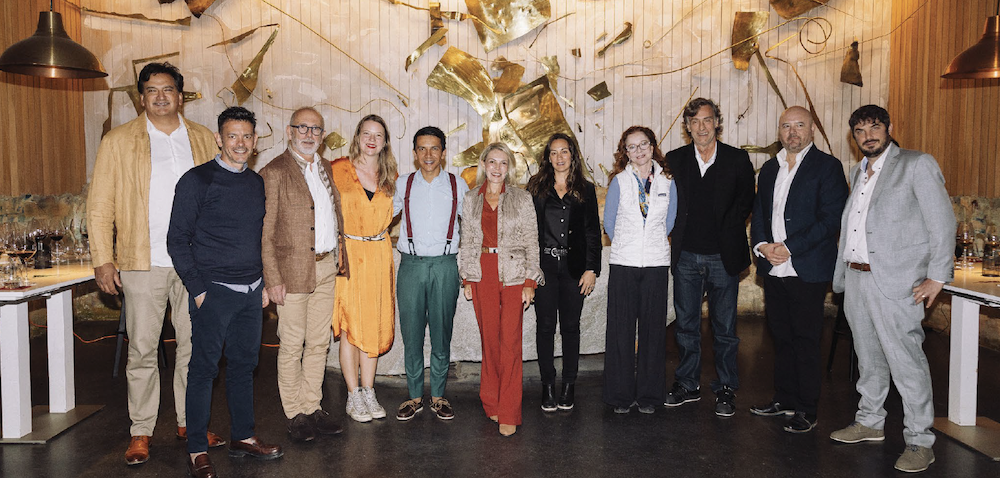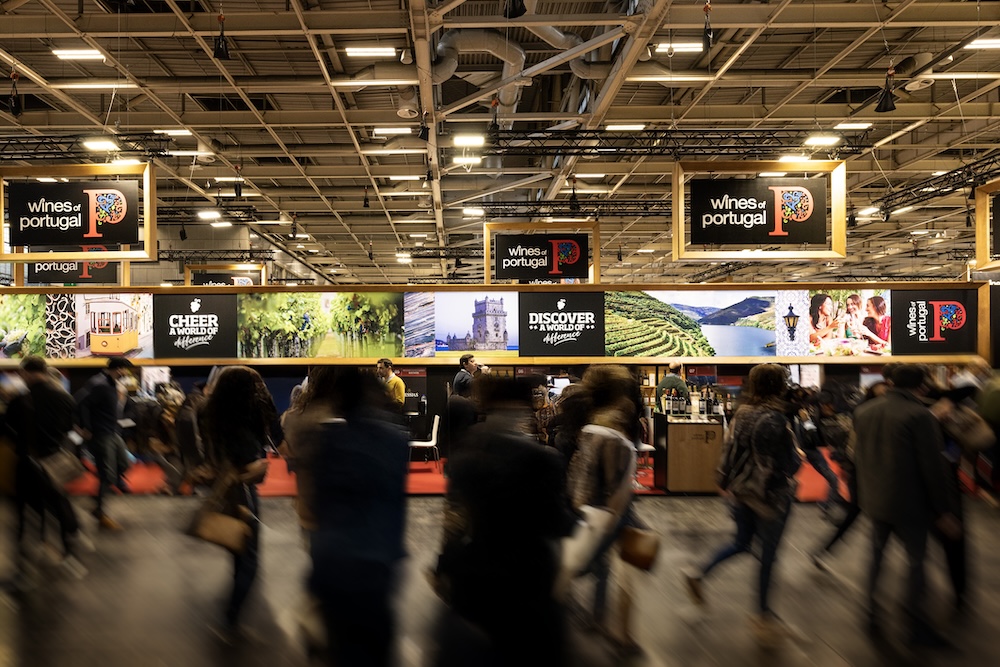
Discovery

Discovery
By Jean-Paul Burias - Photographs: courtesy of the estates, posted on 02 February 2022
In around 2050, the Bordeaux wine region is likely to experience weather patterns similar to today’s climate in central Spain. Merlot is already in the hot spot, which obviously begs the question – will global warming affect other varieties such as the Cabernets (Franc and Sauvignon)? Their growing cycle at least could undergo profound changes, leading to transformations in style and structure. Gilbert & Gaillard travelled to the vineyards to find out more.
Set between the Garonne, the Dordogne and the Gironde estuary, the vineyards of Bordeaux enjoy an outstanding location that has made them a legendary wine region. And yet, one worrying trend is looming on the horizon. Global warming is expected to have significant consequences for winegrowing, as is the increase in dry spells and drought. Throughout history, vines have demonstrated a certain ability to adapt to all kinds of changes and developments. Currently, the Bordeaux grape variety most exposed in the medium term seems to be Merlot. For the Cabernets, the situation is less clear-cut, but there is still concern. Jeremy Cukierman, director of Kedge Wine School, Master of Wine and author, specialises in the issue. “Cabernets have organoleptic profiles that suggest they will adapt better to warmer conditions”, he says. “They retain relatively low pH levels and therefore high acidity even in hot, dry temperate climates. Their natural structure draws the wines out and adds to tension and freshness, ultimately leading to lower sugar density at harvest than Merlot, in similar weather conditions”. The issue is one facing the majority of wineries, some of which have already found solutions.

The Mazeau family is one of the Bordeaux wine industry’s most prominent names. Here, knowledge of wine is part of a quest for excellence that leads them to scale the heights of quality. Genealogical research has shown the family’s unbroken commitment to winegrowing since the 15th century through its direct ancestors. Château Toutigeac was bought in 1928 by Charles Mallet, a wine merchant in Paris and Bordeaux. In 1949, his granddaughter Michelle married René Mazeau before inheriting the estate a year later when her grandfather passed away. When René retired in 1985, Philippe Mazeau, one of his four sons, became manager of Vignobles Toutigeac. With his wife Martine, they developed the estate, which now covers 110 hectares, including 77 hectares of bearing vineyards. After studying viticulture and oenology, their daughter Oriane joined them on the property. She perpetuates the family tradition by becoming the fifth generation with her brother Xavier to make wines at the estate. “Over the years, my family has been able to optimise the vineyards and, using meticulous winemaking techniques, produce supple, generous and fruity wines, that are in keeping with the times”, she explains. "In the future, global warming will change vineyard management techniques and choice of soils. The Cabernets, for example, will need to be planted on cooler soils”.

Nestled on the Médoc peninsula, less than an hour from Bordeaux, Château Tour Bel Air encompasses 7.8 hectares of vines spread over 5 grouped blocks that are easily accessible from the centre of the estate. Two thirds of the blocks are planted on clayey gravel, lending them exceptional quality. One third is home to distinctively lighter, sandier soils over a limestone subsoil. The estate was taken over in 2006 by Patrice Belly, and is run traditionally. “Very ripe grapes means that my Passion and Prestige labels, which have a high proportion of Cabernet, are increasingly popular with customers, particularly in export markets”, he says. “In the first stages, climate change favours Cabernet-Sauvignon, promoting better ripeness, while eliminating any trace of green flavours. The Cabernets are becoming suppler yet also long on the palate. With slightly less sugar than Merlot, Cabernet-Sauvignon can produce lower alcohol levels which, conversely, are starting to become an issue with Merlot”. Better ripeness tends to improve aroma, finesse and structure, whilst also favouring more natural production methods.
On the uppermost slopes of Saint-Laurent-du-Médoc, Château de Cartujac produces Haut-Médoc wines that express strong character and achieve the perfect balance between tannic finesse and persistent roundness. The estate belongs to Vignobles Bruno Saintout, who also owns Château La Bridane in Saint-Julien and Château du Périer in the Médoc appellation area (Cru Bourgeois). “Rising temperatures and a drop in rainfall are conducive to growing Cabernet-Sauvignon and reduce pressure from vine diseases”, says owner Bruno Saintout. “Cabernet-Sauvignon, Merlot and Petit Verdot have achieved perfect expression for many years in southern Europe. No new grape varieties should be introduced, each one should continue to express itself fully in its native country. We simply need to think about rational use of irrigation”. Global warming is already having a tangible effect on Cabernet Franc and Sauvignon crops, yielding very ripe wines every year. Chaptalisation has all but disappeared in the region.
This estate epitomises excellence along with the expertise of Philippe and Gilles Reich, who sadly passed away on 9 February. Established by the two brothers in 1992, Château l'Argenteyre covers 50 hectares near the Gironde estuary, 25 of which are on Pyrenean gravel. Here, the ocean climate promotes characterful wines made from Merlot, Petit Verdot and of course Cabernet-Sauvignon. “The threat to Cabernet-Sauvignon is not from global warming”, feels Philippe Reich. “Quite the contrary – it allows it to fully ripen at the end of the harvest season, which was often lacking two decades ago. The risk is more its susceptibility to grapevine trunk diseases and its premature die-back, which leads to a drop in yields and therefore profitability, though this of course varies depending on planting density”. At Château l'Argenteyre, Cabernet-Sauvignon is planted at high densities on rootstocks that are not very vigorous. This strengthens its resistance, the objective being to maintain reasonable yields and therefore ensure it a good future in the Médoc. “There is no doubt that it is the most sensitive grape variety”, says Philippe Reich. “It needs excellent soil to flourish and deliver its amazing aromas and unique finesse. It only excels when it reaches peak ripeness in perfect health. Only then can it enhance and bolster the basis of the blend with consistent ripeness, higher sugar levels, better homogeneity and good regularity which makes it easier to build a loyal customer base in France and among export buyers”.

The history of this superb estate overlaps the destiny of the extraordinary figures in one of Bordeaux’s most prominent wine companies. The Lurton family has worked tirelessly for several generations to make the finest wines. Its patriarch, André Lurton (1924-2019) inherited the family estate at Château Bonnet in 1956 (a grim year in Bordeaux). He continued the work started in 1897 by his grandfather Léonce Récapet. Vignobles André Lurton now covers 630 hectares, 260 of them in the Pessac-Léognan appellation. His son and renowned winemaker Jacques Lurton has taken over the presidency of the company, injecting it with the inspired and creative vision gleaned from his numerous winemaking experiences in France and abroad. As an expert, he feels that the consequences of global warming are not necessarily a stumbling block. “It’s actually an opportunity for Cabernet, the grape variety that will allow Bordeaux to retain its style”, he comments. “It will continue to impart structure, aroma and finesse to the wines. Every wine region in Europe is defined by one or more iconic grape varieties. I don't see any point in replacing them, but perhaps we should combine them with other varieties by first changing our vineyard management techniques”.

At Château Guichot, the wines mirror the outstanding terroir and expertise of Sébastien Petit. A brilliant and passionate winegrower, he bought this estate in the Entre-Deux-Mers region in 2008, and has been converting it over to organic since 2019. Visitors cannot help but be bowled over by its enchanting setting. An impressive 19th-century building overlooks the 25-hectare estate enhanced by its clay-limestone soils and steep hillsides with a perfect aspect. Merlot accounts for 75% of vineyard acreage, followed by Cabernet-Sauvignon (20%) and Cabernet Franc (5%), forming a very classic trio. During the winemaking process, Sébastien Petit aims for extraction depending on the potential of the grapes in a bid to retain a measure of typicity during the blending process and to produce clean, flavourful wines. “Cabernet-Sauvignon has a bright future ahead of it before potentially suffering from global warming”, he says. “Unlike other appellations in the region such as Graves and Médoc, the soils here are clay. So even in very hot, dry years, our vines suffer less than elsewhere”. Cabernet-Sauvignon naturally has higher acidity, allowing it to retain some freshness even when it is very ripe. For Cabernet Franc, the situation is slightly different with lower acidity and alcohol levels that rise more quickly. “When I vinify Cabernet Franc, I aim for elegance”, says Petit. “This excellent blending variety adds complexity and harmony. I have, though, replanted a lot of Cabernet-Sauvignon in recent years, which I use for my L'Authentique label, a gratifying, rounded, fleshy wine. I like the freshness it instils in the blends, considering that the Merlots are often bordering on over-ripeness”. To cope with global warming, however, the savvy winegrower has also chosen - in recent years - to plant Malbec, which handles greater ripeness well, and Petit Verdot, which adds freshness and vivaciousness.
The world’s second most widely planted grape variety, Cabernet-Sauvignon covers 341,000 hectares, or 4% of the world's vineyard area, far ahead of Cabernet Franc, which is seventeenth with 45,000 hectares, 36,000 of them in France. Although its production may be affected by global warming, numerous examples around the world suggest that Cabernet maintains its edge in areas that are significantly warmer than Bordeaux, such as Napa Valley in California, Chile and Argentina. “People have often proclaimed the end of the reign of certain grape varieties, based solely on the average temperature during the growing season, for specific vineyard sites”, stresses Jeremy Cukierman. “We now realise that these predictions were a bit hasty. These grape varieties still thrive in their historical vineyards and still produce quality wines. Cabernets are naturally aromatic and structured grapes. Climate is only one part of the equation that produces a good wine, along with geology, topography and of course the expertise of the winemaker. Vineyard management and winemaking techniques also help preserve freshness and create wines with lower potential alcohols”. The jury is still out however on whether the preferred blending partner for Cabernet will still be Merlot in years to come. “Cabernet-Sauvignon still has its place in the Médoc”, says Patrice Belly, owner of Château Tour Bel Air. “It should even strengthen its position with climate change, despite its sensitivity to grapevine trunk diseases. The issue is more about how to reduce the presence of Merlot and which new grape varieties should be blended with Cabernet. Introducing a little Syrah would be a bonus in terms of aromatics”. Petit Verdot – already grown in Bordeaux – is also among contenders with the ability to rise to the challenge of higher temperatures, while adding finesse and magnificent aromas. Many experts predict an increase in the proportion of Cabernet in Bordeaux blends, which is what has occurred in Margaux, for example. Inevitably, the aromas and taste profile of wines will evolve with global warming, as will production processes and, above all, consumer expectations. It is probably true to say that the overarching ability to adapt will be the real challenge for Bordeaux producers.

Discovery

Discovery

Discovery